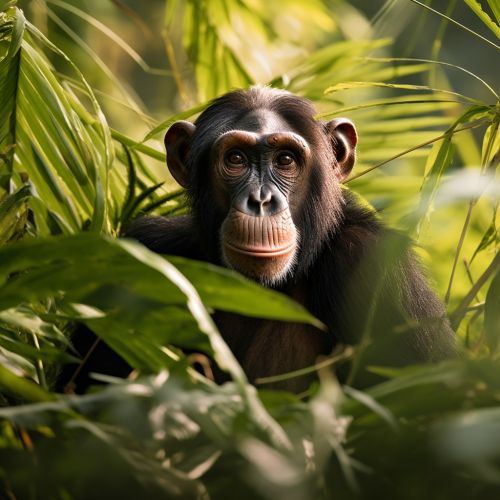Pan (genus)
Taxonomy
The genus Pan consists of two extant species: the bonobo and the common chimpanzee. Both species are native to Sub-Saharan Africa and are currently considered endangered due to habitat loss and hunting. The genus Pan is part of the family hominidae, which also includes humans, gorillas, and orangutans.


Evolution
The genus Pan is believed to have diverged from the lineage leading to humans approximately 5-7 million years ago. The two species of Pan, the bonobo and the common chimpanzee, diverged from each other around 1-2 million years ago. The exact timing of these divergences is still a matter of ongoing research in paleoanthropology.
Anatomy and Physiology
Chimpanzees and bonobos are similar in size, with adult males weighing between 30-60 kg and females weighing slightly less. They have a robust build and long arms, which are longer than their legs. This is an adaptation for their arboreal lifestyle, as it aids in brachiation, or arm-swinging locomotion. Their hands are highly dexterous, allowing them to manipulate objects and use tools.
Behavior and Ecology
Both species of Pan are highly social and live in complex, hierarchical communities. They exhibit a wide range of behaviors including cooperation, aggression, and altruism. They are also known for their tool use, which includes the use of sticks to extract termites from their mounds and rocks to crack open nuts.
Bonobos are known for their peaceful and matriarchal societies, where sexual behavior is used to maintain social bonds and diffuse tension. On the other hand, common chimpanzee societies are often characterized by male dominance and aggression.
Conservation
Both the bonobo and the common chimpanzee are listed as endangered by the International Union for Conservation of Nature (IUCN). The major threats to their survival include habitat loss due to deforestation and hunting for bushmeat. Conservation efforts are ongoing and include habitat protection, anti-poaching measures, and captive breeding programs.
